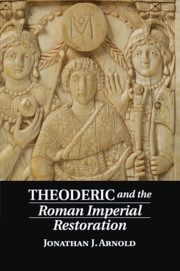Refine search
Actions for selected content:
23990 results in Ancient history
Five - The Territorial Level: The Roman Hinterland from the Bronze Age to the Republican Period
-
- Book:
- The Urbanisation of Rome and <I>Latium Vetus</I>
- Published online:
- 05 January 2014
- Print publication:
- 10 February 2014, pp 133-170
-
- Chapter
- Export citation
Preface
-
- Book:
- The Urbanisation of Rome and <I>Latium Vetus</I>
- Published online:
- 05 January 2014
- Print publication:
- 10 February 2014, pp xvii-xviii
-
- Chapter
- Export citation
Notes
-
- Book:
- The Urbanisation of Rome and <I>Latium Vetus</I>
- Published online:
- 05 January 2014
- Print publication:
- 10 February 2014, pp 333-360
-
- Chapter
- Export citation
Bibliography
-
- Book:
- The Urbanisation of Rome and <I>Latium Vetus</I>
- Published online:
- 05 January 2014
- Print publication:
- 10 February 2014, pp 361-390
-
- Chapter
- Export citation
Seven - Multi-Dimensional and Multi-Theoretical Approach to Urbanisation and State Formation in Latium Vetus
-
- Book:
- The Urbanisation of Rome and <I>Latium Vetus</I>
- Published online:
- 05 January 2014
- Print publication:
- 10 February 2014, pp 216-248
-
- Chapter
- Export citation
Introduction
-
- Book:
- The Urbanisation of Rome and <I>Latium Vetus</I>
- Published online:
- 05 January 2014
- Print publication:
- 10 February 2014, pp 1-6
-
- Chapter
- Export citation
Dedication
-
- Book:
- The Urbanisation of Rome and <I>Latium Vetus</I>
- Published online:
- 05 January 2014
- Print publication:
- 10 February 2014, pp v-vi
-
- Chapter
- Export citation
Figures and Tables
-
- Book:
- The Urbanisation of Rome and <I>Latium Vetus</I>
- Published online:
- 05 January 2014
- Print publication:
- 10 February 2014, pp x-xvi
-
- Chapter
- Export citation
Contents
-
- Book:
- The Urbanisation of Rome and <I>Latium Vetus</I>
- Published online:
- 05 January 2014
- Print publication:
- 10 February 2014, pp vii-ix
-
- Chapter
- Export citation
Copyright page
-
- Book:
- The Urbanisation of Rome and <I>Latium Vetus</I>
- Published online:
- 05 January 2014
- Print publication:
- 10 February 2014, pp iv-iv
-
- Chapter
- Export citation
Four - The Territorial Level: Definition and Dating of theAger Romanus Antiquus
-
- Book:
- The Urbanisation of Rome and <I>Latium Vetus</I>
- Published online:
- 05 January 2014
- Print publication:
- 10 February 2014, pp 105-132
-
- Chapter
- Export citation
Three - The City Level: Rome from a Small Bronze Age Village to the Great City of the Archaic Age
-
- Book:
- The Urbanisation of Rome and <I>Latium Vetus</I>
- Published online:
- 05 January 2014
- Print publication:
- 10 February 2014, pp 66-104
-
- Chapter
- Export citation
Index
-
- Book:
- The Urbanisation of Rome and <I>Latium Vetus</I>
- Published online:
- 05 January 2014
- Print publication:
- 10 February 2014, pp 391-411
-
- Chapter
- Export citation
Appendix
-
- Book:
- The Urbanisation of Rome and <I>Latium Vetus</I>
- Published online:
- 05 January 2014
- Print publication:
- 10 February 2014, pp 261-332
-
- Chapter
- Export citation
The Urbanisation of Rome and Latium Vetus - Title page
-
-
- Book:
- The Urbanisation of Rome and <I>Latium Vetus</I>
- Published online:
- 05 January 2014
- Print publication:
- 10 February 2014, pp iii-iii
-
- Chapter
- Export citation
One - Urbanisation and State Formation in Middle Tyrrhenian Italy: Historical Questions and Theoretical Models
-
- Book:
- The Urbanisation of Rome and <I>Latium Vetus</I>
- Published online:
- 05 January 2014
- Print publication:
- 10 February 2014, pp 7-34
-
- Chapter
- Export citation
Acknowledgements
-
- Book:
- The Urbanisation of Rome and <I>Latium Vetus</I>
- Published online:
- 05 January 2014
- Print publication:
- 10 February 2014, pp xix-xx
-
- Chapter
- Export citation
Six - The Regional Level: Settlement Pattern Analysis in Latium Vetus from the Bronze Age to the Archaic Age
-
- Book:
- The Urbanisation of Rome and <I>Latium Vetus</I>
- Published online:
- 05 January 2014
- Print publication:
- 10 February 2014, pp 171-215
-
- Chapter
- Export citation

Theoderic and the Roman Imperial Restoration
-
- Published online:
- 05 February 2014
- Print publication:
- 24 February 2014
12 - Epilogue
-
- Book:
- Ancient Persia
- Published online:
- 05 June 2014
- Print publication:
- 20 January 2014, pp 217-220
-
- Chapter
- Export citation
